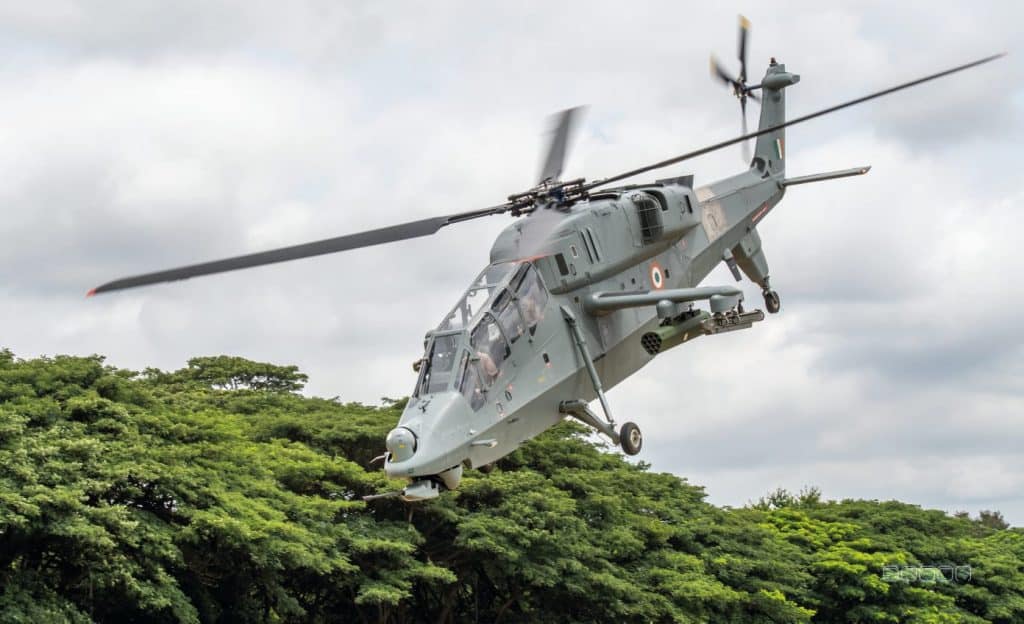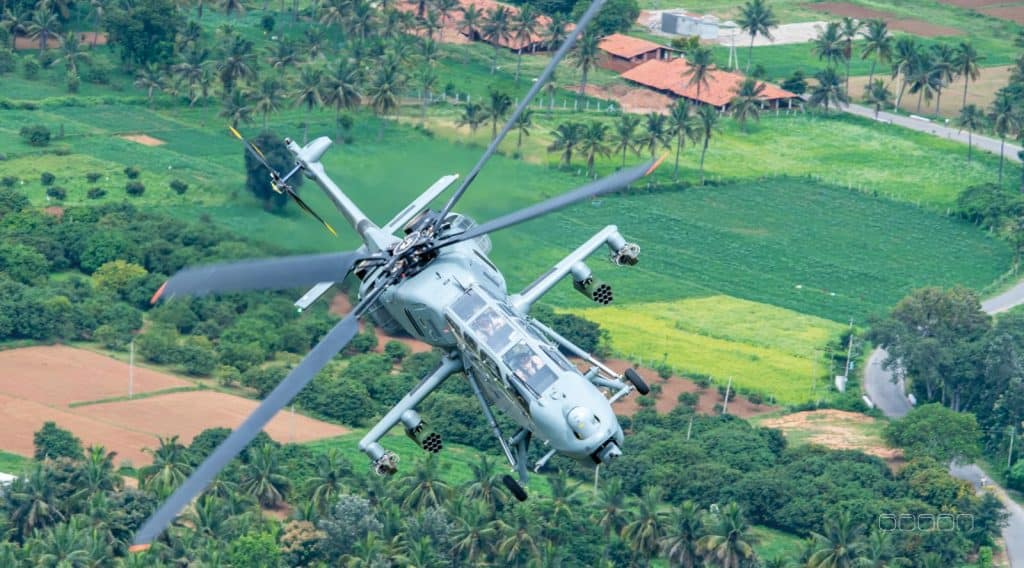
Indian Prime Minister Narendra Modi will ceremonially kick off the era of the indigenous Light Combat Helicopter (LCH) in the Indian Air Force today with a formal hand-over ceremony in the northern state of Uttar Pradesh. The gesture comes amidst heightened anticipation — frustration really — over just when the LCH, cleared and certified in all respects for military service, will receive its first orders. An acquisition of 15 airframes was signed off on by the Ministry of Defence earlier this year, but the actual contract with the helicopter’s maker Hindustan Aeronautics Ltd (HAL) remains perplexingly out of reach thus far.
The question now is this: is it worth wondering what this hesitancy is really about? Has the violent collision of India’s age-old impulses on importing defence hardware and the newly incentivised imperative for indigenous weaponry yielded embarrassingly little? To be fair, the answer is not quite. Sure, things have changed. And sure, there’s a palpable fresh sense of heart and mind for homegrown defence products. But there’s a reason why frustrations over the lack of resolute and large-scale orders for the LCH are so particularly pronounced.

The truth is, circumstances couldn’t possibly be more optimal for the government and military to go big with the LCH. Apart from the obvious benefits of an Indian-designed and Indian-built helicopter, the LCH is purpose built for the vagaries of Indian battlefields, particularly the super high altitude operational areas of Ladakh and Arunachal Pradesh. If optimum conditions must literally scream themselves out, then both Ladakh and Arunachal have remained tense for months now. Since May last year, eastern Ladakh has been the canvas for the world’s largest continuing military standoff. So volatile was the confrontation last year, that the Indian Air Force, pushed the emergency button to get all possible air assets flying operationally in the theatre — including a pair of un-inducted Light Combat Helicopters. It was an unprecedented move that established the urgency to activate all possible offensive assets, but also the benefits of getting a real life operational scenario to test a product that’s been waiting in the proverbial wings. You can read all about that deployment here:
Price negotiations for the supply of 15 limited series production (LSP) LCH airframes concluded in early 2020, with final MoD approvals coming over a year later in September this year. Meanwhile, HAL has primed its Bengaluru production line to churn out the helicopters at high capacity in anticipation of initial orders, and with the assurance that they will be scaled up to over 200 helicopters or more. A frequent grouse within HAL, industry and even sections of the Indian military is that the alacrity demonstrated by the Indian system in executing foreign defence orders is a far cry from the painstaking pencil-pushing reluctance to go the distance with Indian armaments.
To be sure, the LCH isn’t without its own issues — most notably its lack of a full weapons package. Livefist had detailed the absurd weaponisation quagmire the LCH and its in-service cousin the Rudra continue to face on this front. You can read about that here:
But none of the LCH’s current problems are development or testing related. They pertain instead tellingly to bureaucratic indecision and systemic inertia. In terms of development and testing, the helicopter has managed to meet expectations quickly. None of any pending issues, including the ongoing war against airframe weight, are in any way an argument against biting the bullet and placing orders. The delays in placing orders also now stand to have a ripple effect on the program down the line. Those very delays ought, according to one view, persuade the Indian Air Force to abandon plans of ordering a measly 15 airframes, and instead bet big on the LCH with orders of 75+ airframes of an Mk1 variant. Not only would this mitigate the ill effects of past delays and hesitancy, but would boost the program’s next steps inestimably. The cascading effect of such large-scale support would likely also catalyse a solution to weight, weaponisation and any other induction issues.

The time to open up fully to the LCH hasn’t passed. If anything, it’s now.

The only way Indian Army and Air force will buy LCH is to do away with imports of any attack helicopter. If you have Modi ji’s ear, please ask him to sell off our apache fleet. Let the armed forces think of it as a lease whose time ran out. We can see real attitude change then.
We can fund LCH buy using the proceeds.
Indian armed forces have bought huge number of ALH. All of them incrementally better and designed for varied roles.
Same will happen to LCH. No worries.
I think HAL/DRDO must start development of next gen ALH.
I think this requires a more careful investigation as to why the airforce and army have not ordered the helicopters.
Although on paper the plane looks great, as with any such warfighting weapon, its all about availability and logistics of keeping the asset flying.
How difficult is this thing to work on? Is it easy with quick turn around times, or is it like DRDOs previous efforts, where things were not easily accessible? Are there too many parts involved in maintenance?
Also, if this helicopter has no weapons, isn’t it already defeated before entering the battlefield?
What was the report of its performance when it was deployed by the air force last year? Did it perform well in those conditions? Nothing is mentioned on this
I want to hear from the technicians/mechanics on how easily this thing can be worked on. Lets hear a report from the pilots who flew this helicopter last year on the front lines. If there are no major issues with maintenance and spares and performance, and there is a good time line on weapons development by the time this thing is produced, then I will believe that the army/air force is intentionally not ordering this helicopter.
Honestly, the one irritating thing about Indian defence development is all the back and forth accusations of bias towards foreign goods rather than real discussion on the issues with the products developed by DRDO. Only after years of delays do we find out the real reason the army/air force did not accept a platform, and they are always d/t performance issues or poor design/difficulty with maintaining the equipment.
Indian armed forces are buying ALH in large numbers. There have been incremental improvements over the years and numerous variants.
LCH too will follow similar path.
In fact, HAL/DRDO must start development of next gen ALH.
The defence ministry should push the issue “hard” and order 200 LCH on the armys behalf and force them to accept it.
It makes no sense to buy so many Rudras if all was well with the high altitude performance of the LCH. Have they compromised crew protection for altitude performance? Is the Indian ATGM ready for production or is it still a dud? Or is everything fine and are all systems on go? Some investigative report on the LCH pl. Pl reassure us patriots who are keen to see a world class gunship helo that’s made in India.